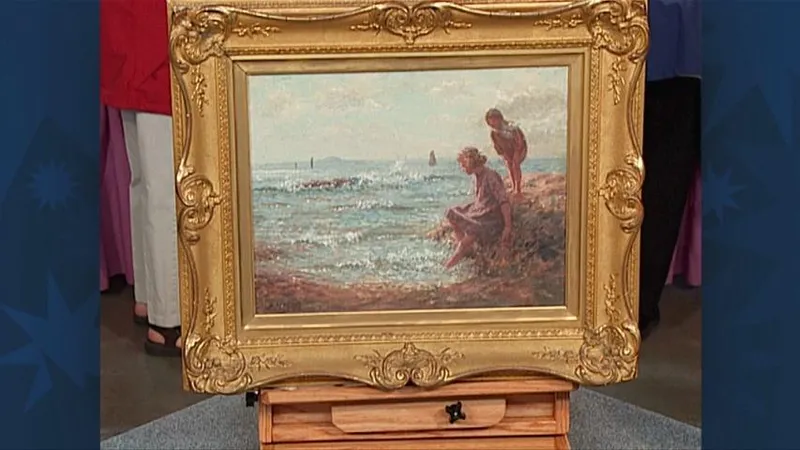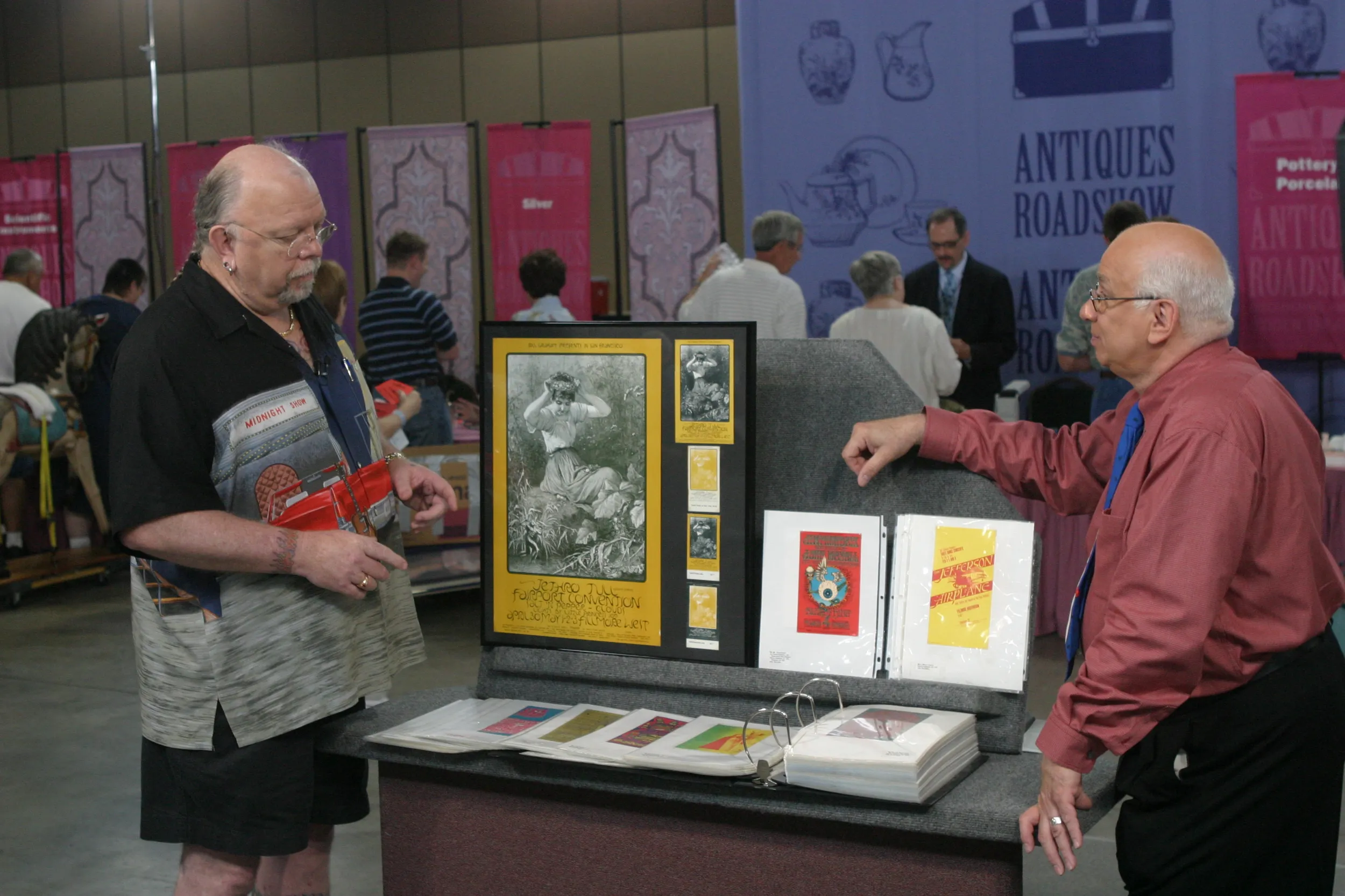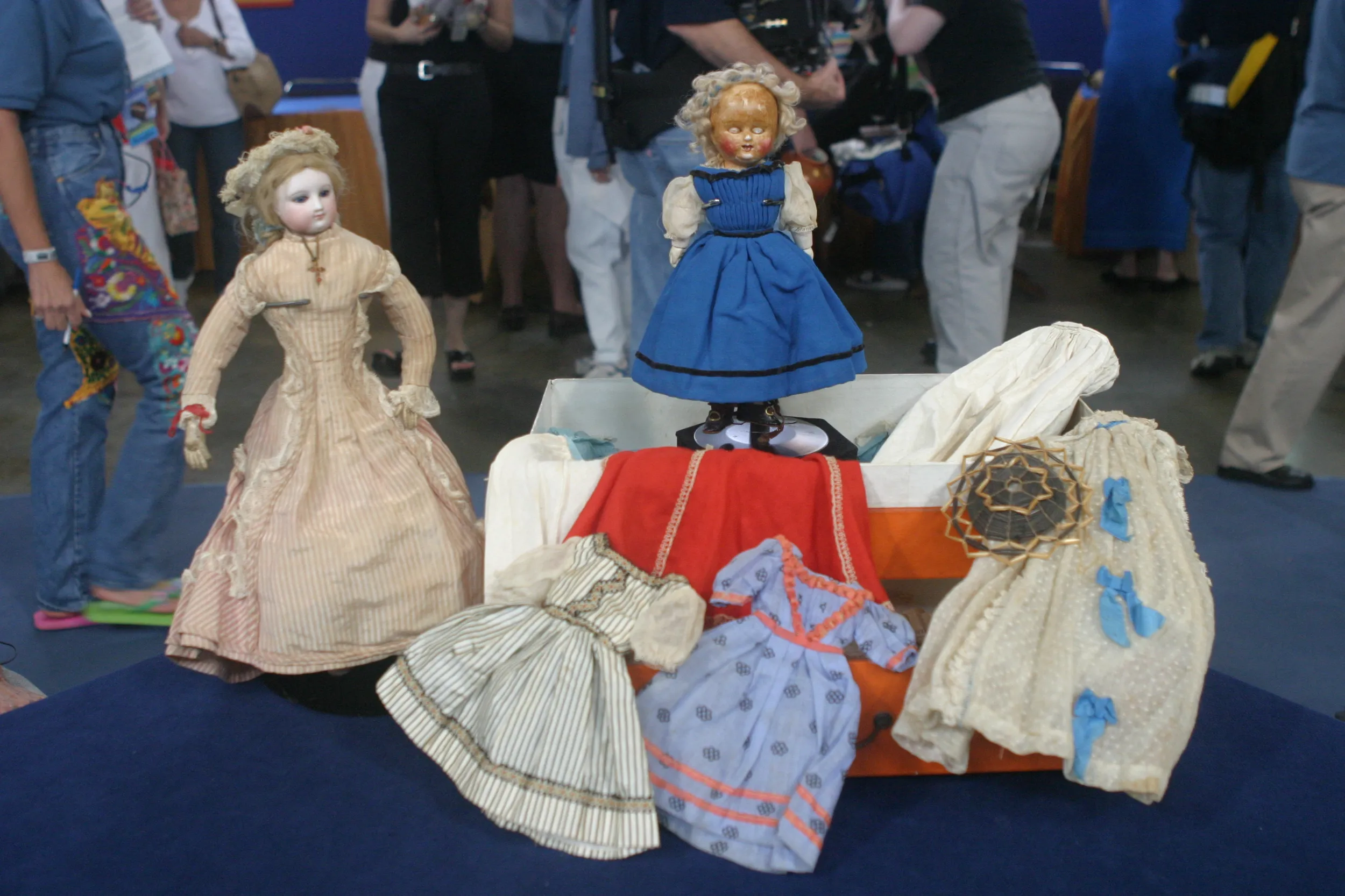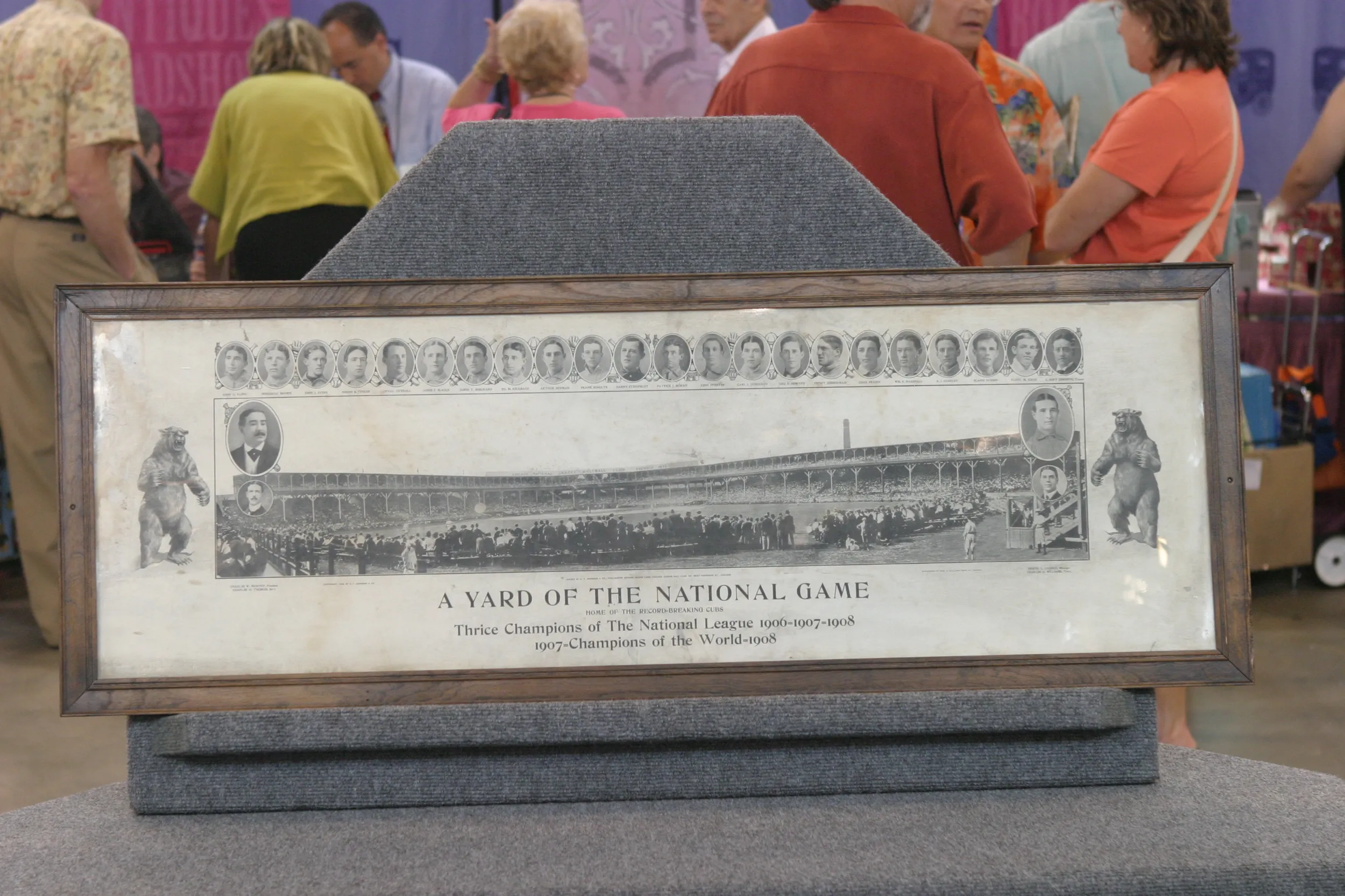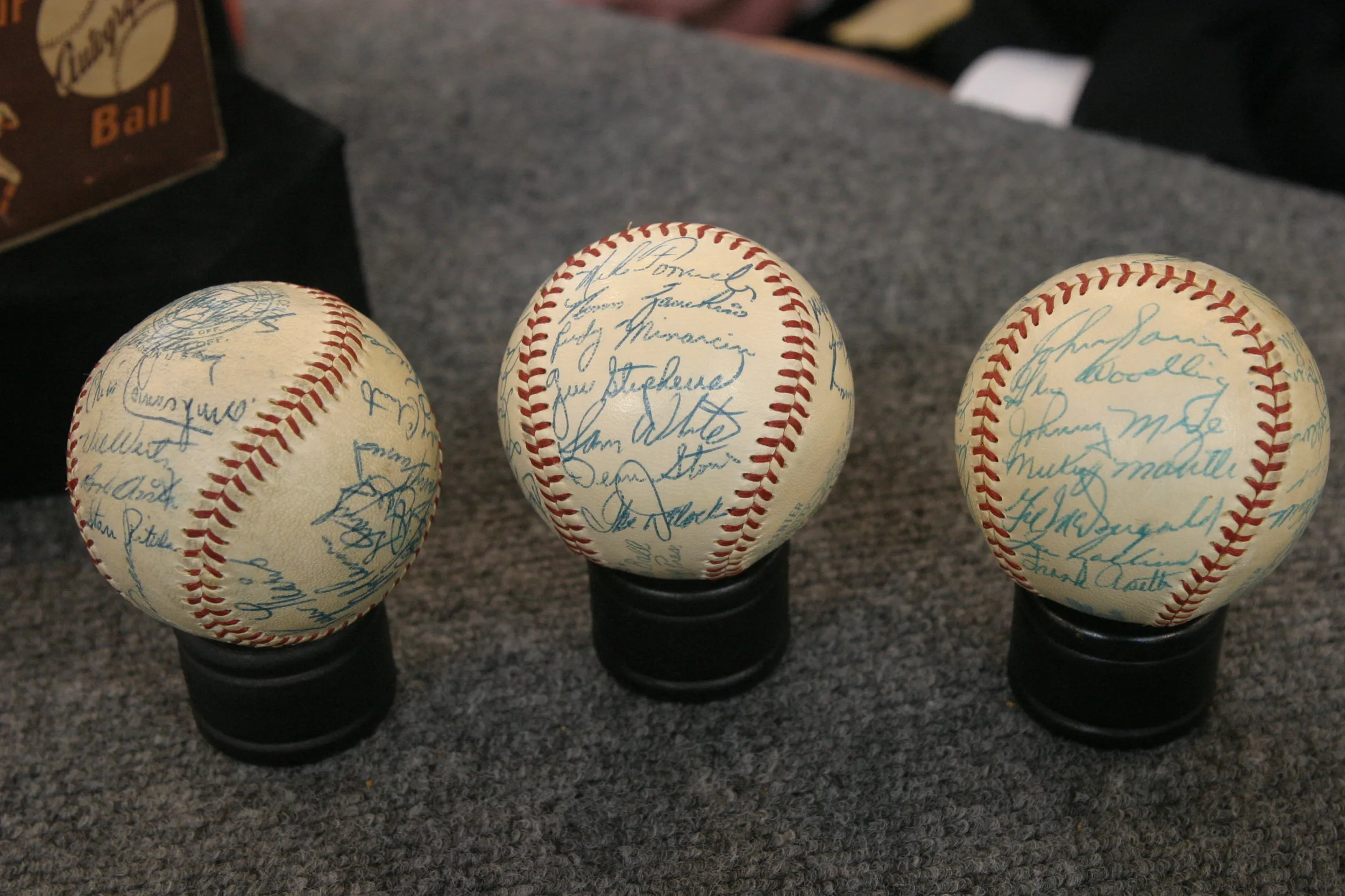GUEST: It was my great-aunt's. My mother eventually was given it and then she gave it to me.
APPRAISER: From what country did it come from?
GUEST: I'm not absolutely sure. I think it was England.
APPRAISER: Well, it's an English doll, it's wax, and it's made in the period of the 1870s, early 1880s. These were luxury toys. A doll like this would have belonged to a very, very, very wealthy family. It has its complete wardrobe plus something which was very interesting: the crate that it came in, which lists all the clothing.
GUEST: Oh.
APPRAISER: Which is very, very neat. It came to this country in 1937. The doll was made, like I say, 1870s, 1880s. It has a very interesting mechanism in it. If you go under here, down towards here under all these petticoats, there's a lever, and this lever opens and shuts her eyes. Do you know who made the doll at all?
GUEST: I have no idea.
APPRAISER: Okay, this is very hard to see, but under here again, if we can get down really, really low, there's a label that says "Lucy Peck Dolls Bazaar," which was in London. Now, a doll at this time, in the 1880s, sold for approximately $75 to $100. So that was a lot of money in 1880.
GUEST: Oh, yes.
APPRAISER: It's what they call "poured wax." A Lucy Peck wire-eyed wax on today's market would sell on the cheap side for $4,000 to $6,000.
GUEST: Really?
APPRAISER: And you have a prime beautiful example of a great doll.
GUEST: She's a wonderful doll.

